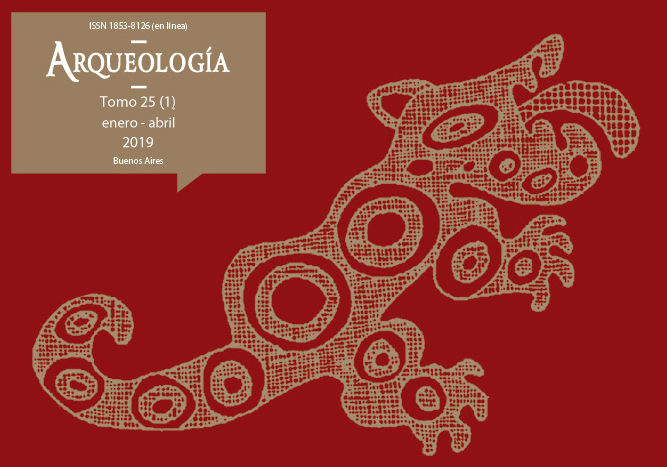Between hills and gullies. Advances in the archaeological site plan of San José Fort (Península Valdés, Chubut)
Abstract
This study presents the archaeological site plan from San José Fort site (Península Valdés, Chubut). The plan is the result of an integration of historical and cartographic documentation, complemented by the archaeological results from three field seasons. One of the main questions that guided this research referred to how space was organized and inhabited in this particular colonial settlement, especially given that the historical data was fragmented and ambiguous, while the archaeological record was unobtrusive. This makes San José Fort a rare and complex case in historical archaeology. Here we present our methodological approach for examining the organization and use of this colonial space, focusing on the natural formation processes that affected the site, and the consequences of this for the archaeological record and the preservation of local heritage.Downloads
Copyright (c) 2019 Marcia Bianchi Villelli, Silvana Buscaglia, Paula D. Calandrón, Anabella G. Sellanes

This work is licensed under a Creative Commons Attribution-NonCommercial-ShareAlike 4.0 International License.
Authors who publish in this journal agree to the following conditions:
- Authors retain copyright and yield to the journal right of first publication with the work registered with attribution license Creative Commons, which allows third parties to use the published always mentioning the authorship of the work and first publication in this magazine.
- Authors can make other independent and additional contractual arrangements for the non-exclusive distribution of the version of the article published in this issue (p. Eg., Inclusion in an institutional repository or publish it in a book), provided that clearly indicate that the work was published for the first time in this magazine.
- It allows and encourages the author / s to publish their work online (eg institutional or personal pages) before and during the process of revision and publication, as it can lead to productive exchanges and greater and more rapid dissemination of work published (See The Effect of Open Access).





(1)13.png)






1.jpg)
1.jpg)


13.png)
1.png)


(1)1.png)









